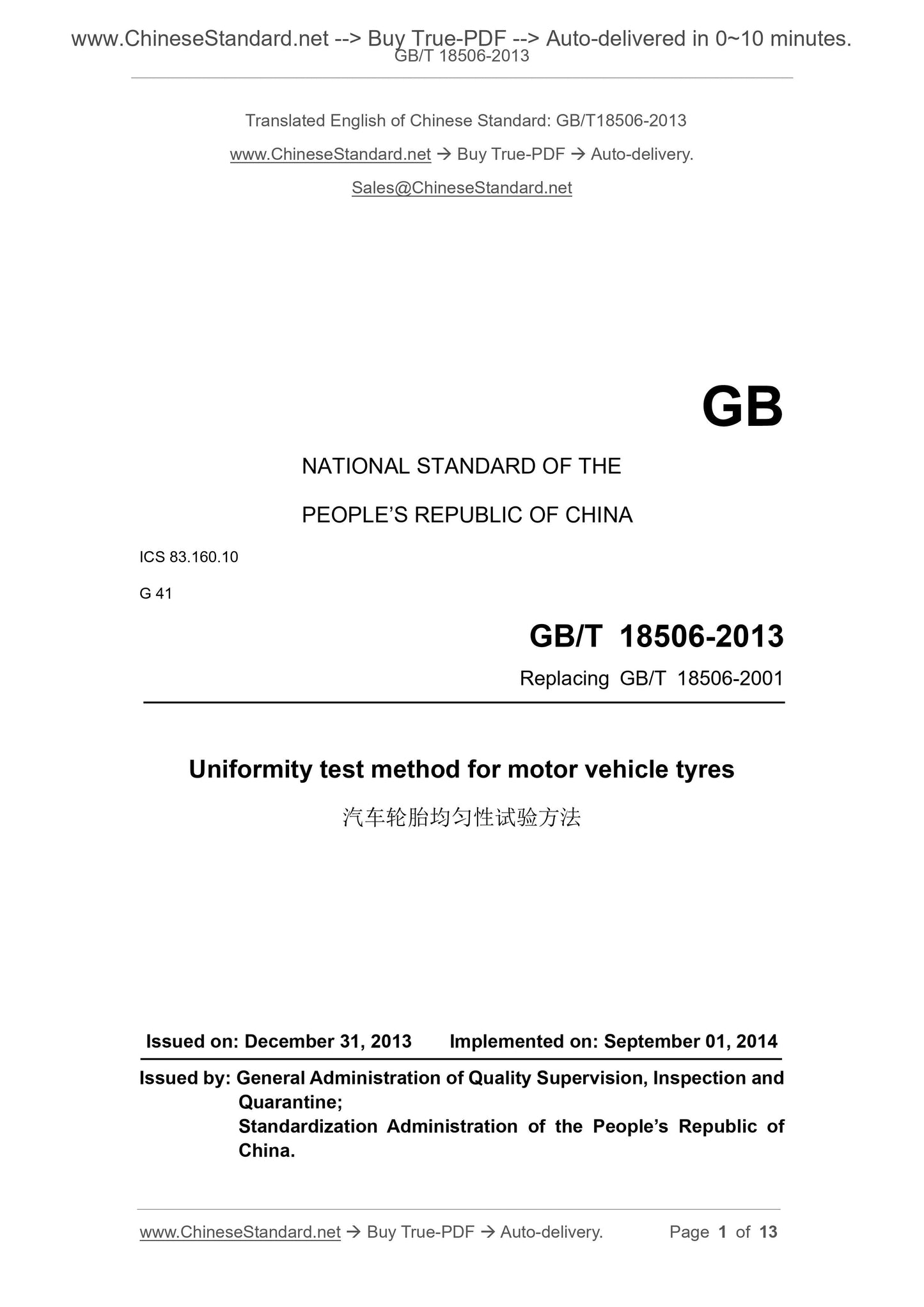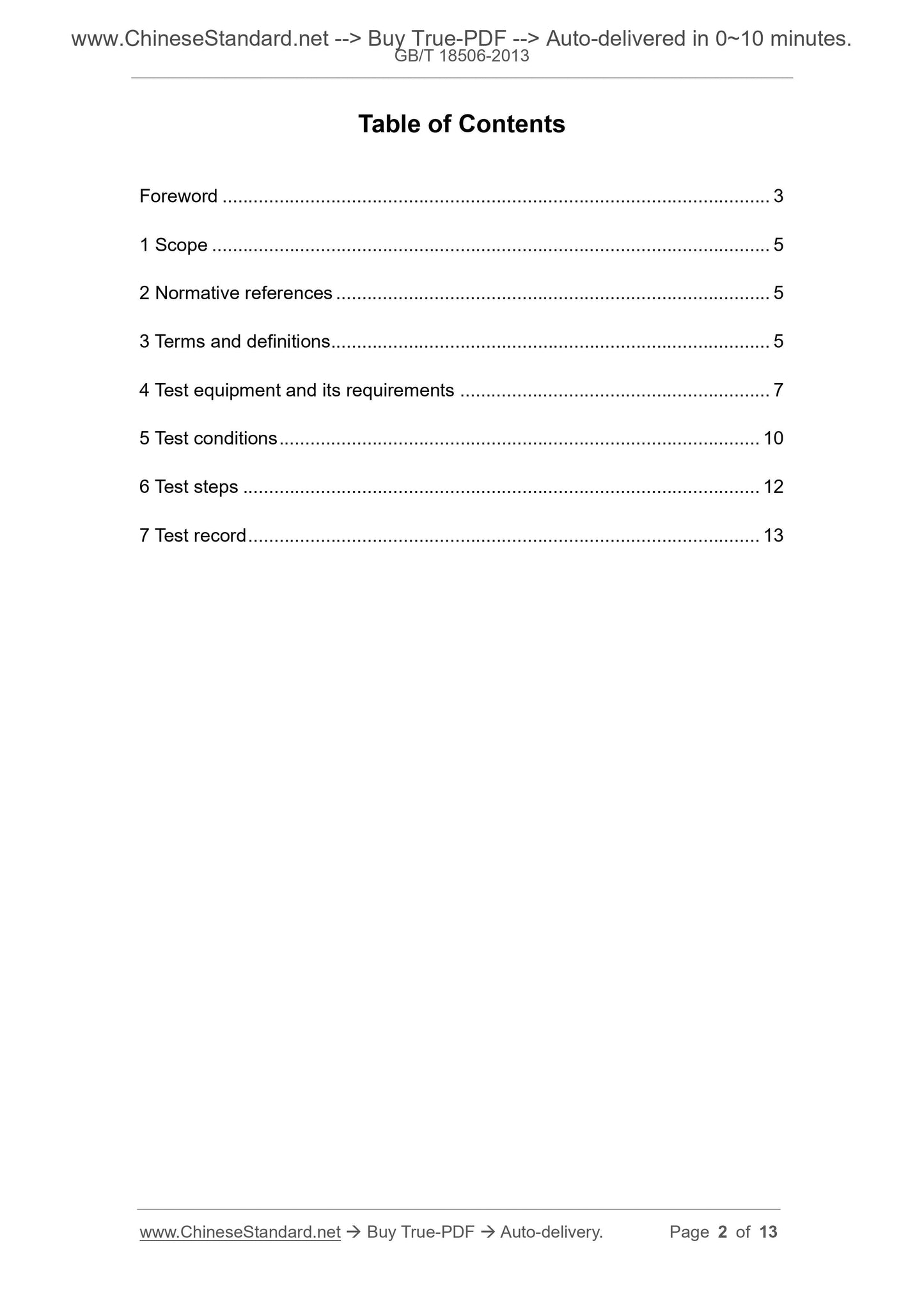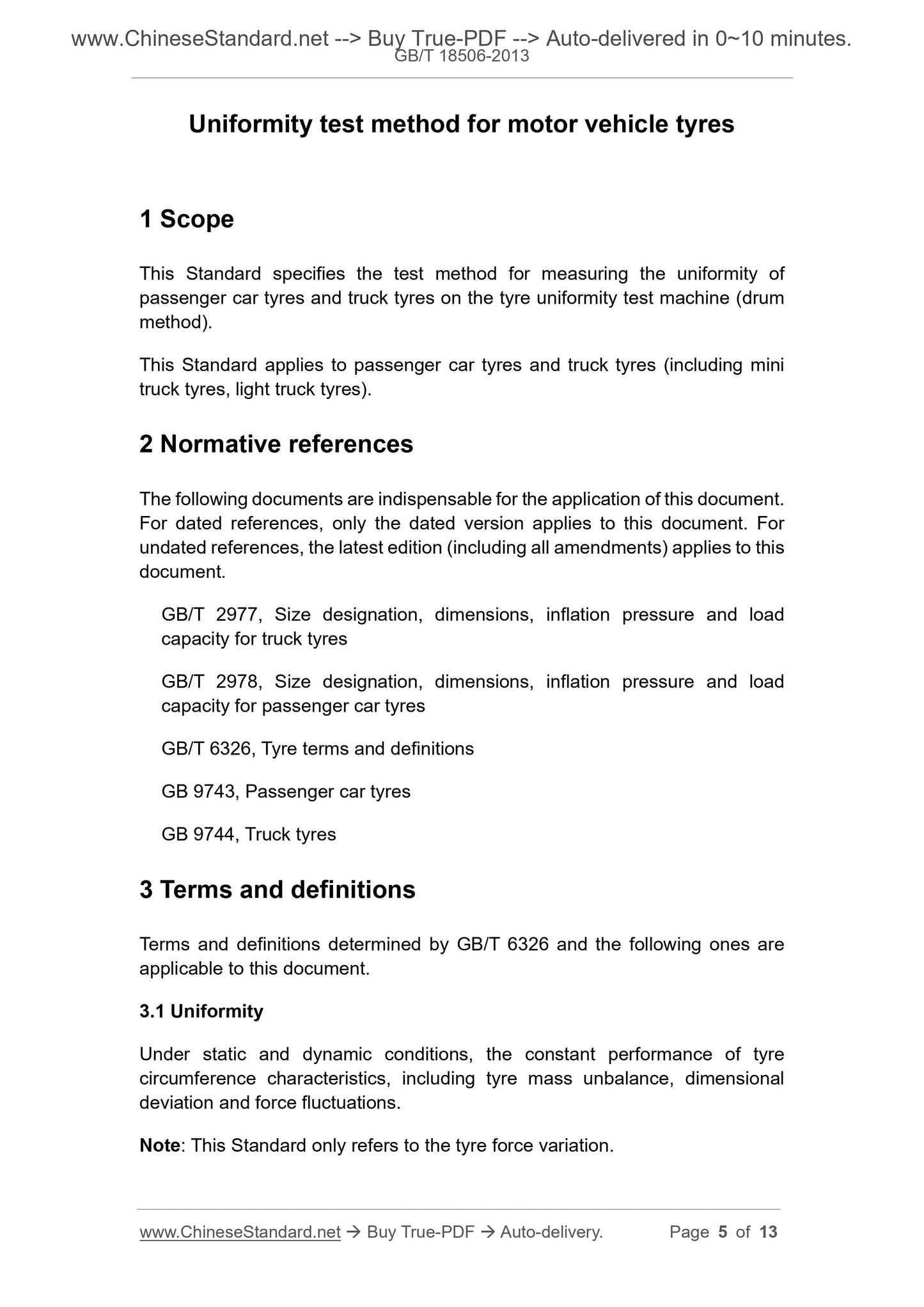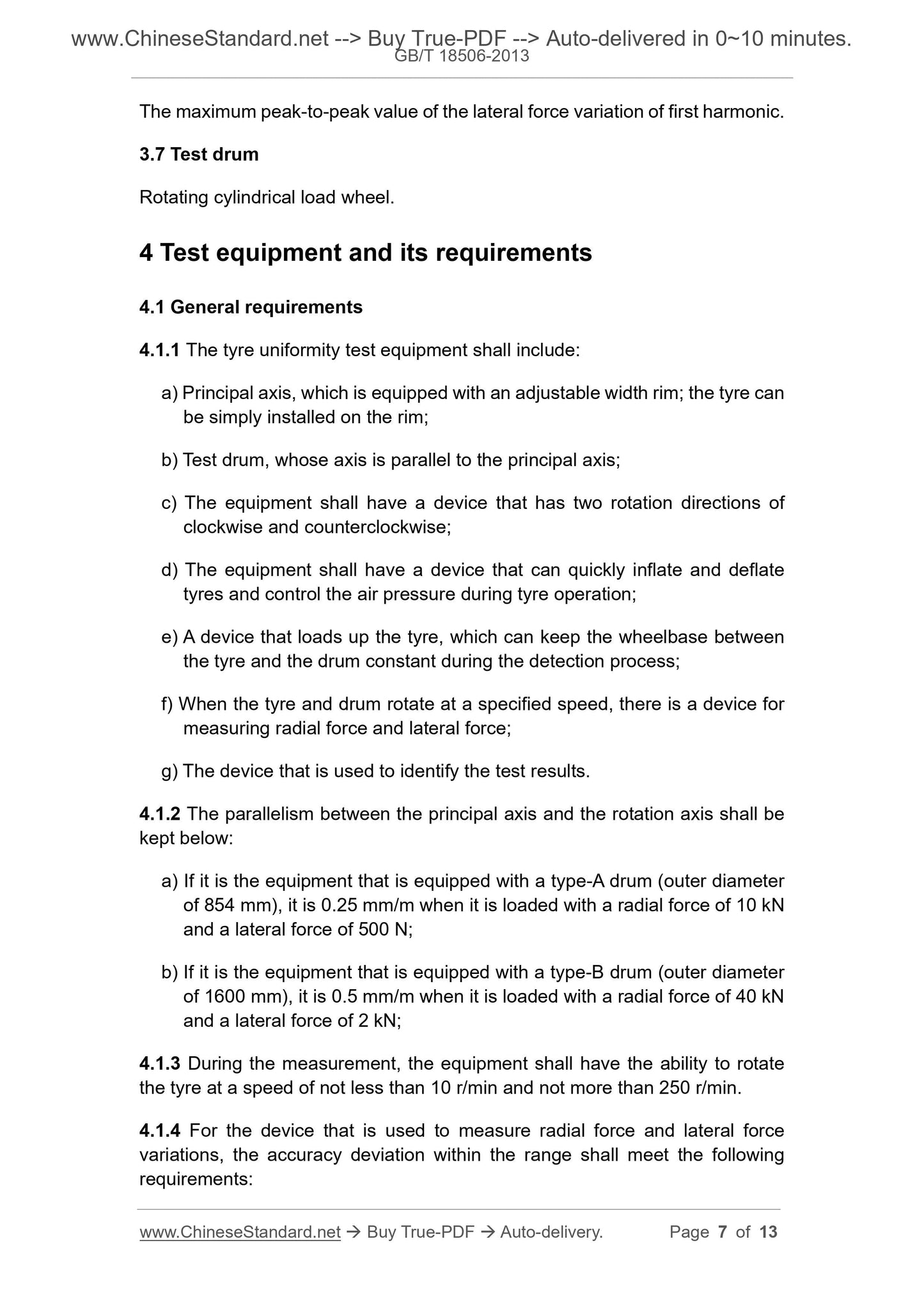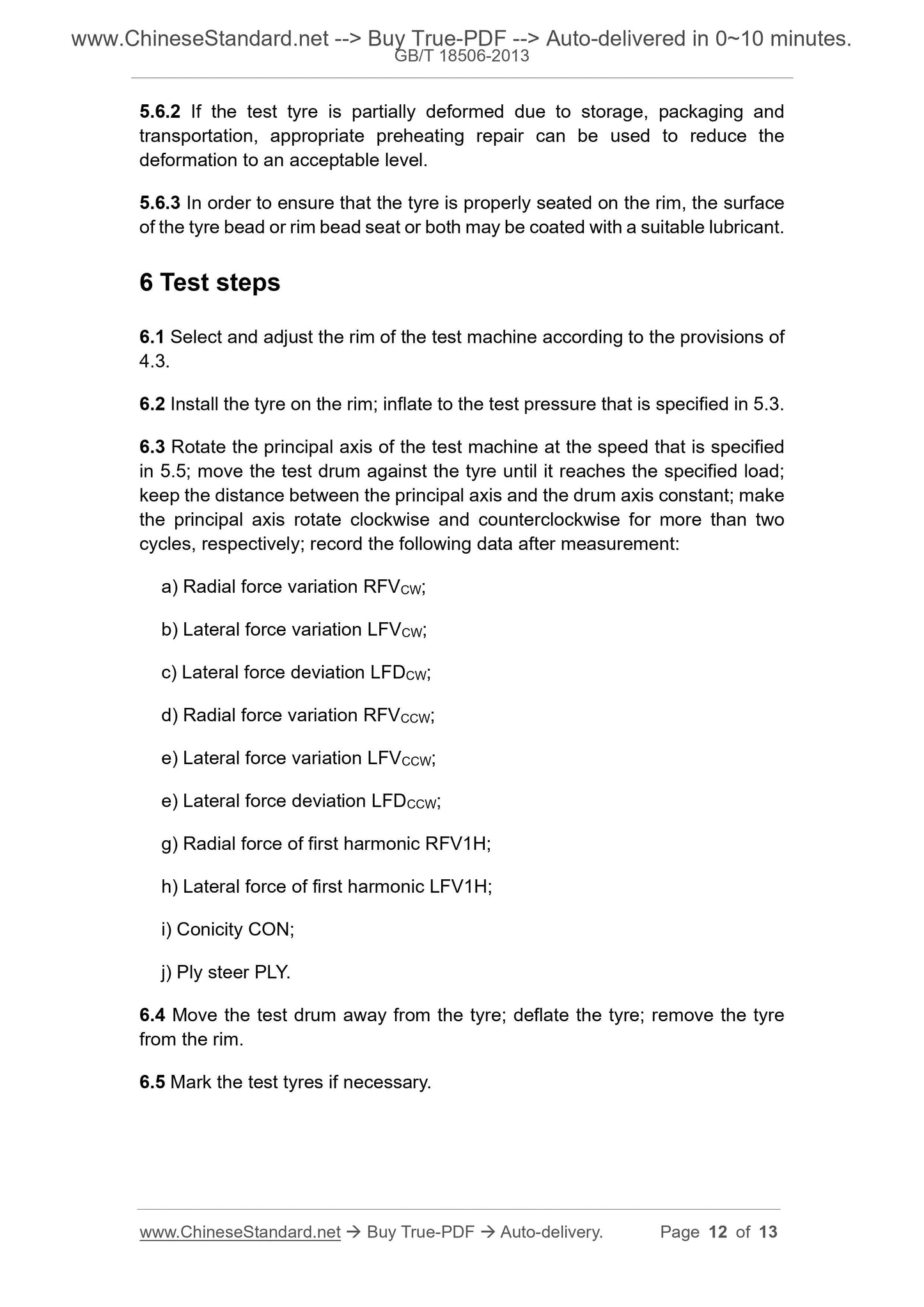1
/
of
5
www.ChineseStandard.us -- Field Test Asia Pte. Ltd.
GB/T 18506-2013 English PDF (GB/T18506-2013)
GB/T 18506-2013 English PDF (GB/T18506-2013)
Regular price
$150.00
Regular price
Sale price
$150.00
Unit price
/
per
Shipping calculated at checkout.
Couldn't load pickup availability
GB/T 18506-2013: Uniformity test method for motor vehicle tyres
Delivery: 9 seconds. Download (and Email) true-PDF + Invoice.Get Quotation: Click GB/T 18506-2013 (Self-service in 1-minute)
Newer / historical versions: GB/T 18506-2013
Preview True-PDF
Scope
This Standard specifies the test method for measuring the uniformity ofpassenger car tyres and truck tyres on the tyre uniformity test machine (drum
method).
This Standard applies to passenger car tyres and truck tyres (including mini
truck tyres, light truck tyres).
Basic Data
| Standard ID | GB/T 18506-2013 (GB/T18506-2013) |
| Description (Translated English) | Uniformity test method for motor vehicle tyres |
| Sector / Industry | National Standard (Recommended) |
| Classification of Chinese Standard | G41 |
| Classification of International Standard | 83.160.10 |
| Word Count Estimation | 9,958 |
| Older Standard (superseded by this standard) | GB/T 18506-2001 |
| Quoted Standard | GB/T 2977; GB/T 2978; GB/T 6326; GB 9743; GB 9744 |
| Regulation (derived from) | National Standards Bulletin 2013 No. 27 |
| Issuing agency(ies) | General Administration of Quality Supervision, Inspection and Quarantine of the People's Republic of China, Standardization Administration of the People's Republic of China |
| Summary | This standard specifies the tire uniformity machine (drum method), the test method car tires and truck tire uniformity measurements. This standard applies to passenger car tires and truck tires (including mini-truck tires, light truck tires). |
Share
